CONVERTING THE BEHRINGER
DD-400 DIGITAL DELAY GUITAR PEDAL
TO A SYNTHESIZERS.COM PANEL MODULE
(Page Two)
by Dana Countryman
Now, a little discussion.
I've had problems in the past, when
I've tried to convert a guitar pedal into a modular synthesizer-format
module. When desoldering parts
to remove from the PC board, it's very easy to tear the delicate
copper wire tracings, and mess up the board. I would wholeheartedly
discourage you from
considering removing the audio and power connectors by de-soldering
them.
ALSO, they coated the PC board with
a dark blue coating of some kind of protective spray.
This makes it extremely difficult to SEE the copper tracings of
the PC board, if you DO need to repair a broken tracing connection.
And the tracings are on BOTH sides of the board ("through-hole".)
Finally, this guitar pedal is ROHS-compliant.
Meaning, ithe PC board does not use lead-based solder.
Instead, they used another kind of solder - probably Silver Solder.
Your usual soldering gun will not get hot enough to efficiently
melt this stuff. You will, however still need to de-solder the
pot casing lugs.
For that, you will need a hi-temp soldering unit: one that will
get to (at least) above 270 degrees Farenheit.
I bought a battery-powered hi-temp soldering gun from Radio Shack
for about $19.
It will work fine on ROHS-compliant solder, without your spending
an arm and a leg.
Be very careful, when desoldering.
Almost every connection has MICRO-resistors and capacitors laid
across the solder joints. If you mess up even ONE of these connections
up, your entire unit may be rendered non-functional.
The ONLY connections I
recommend desoldering, are the Potentiometer Casing Lugs. See
below:
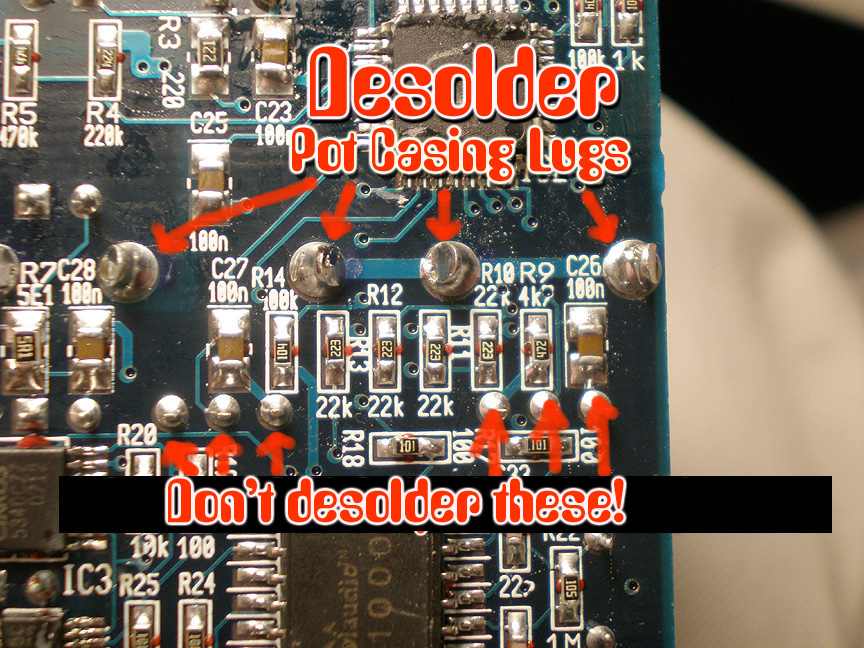
The larger Pot Casing Lugs are anchored in solder. These must
be removed. The smaller connections that I've marked below, are
the actual
potentiometer terminal connections. Your goal will to be to desolder
the pot casing, destroy the potentiometer by chopping it up,
and LEAVE the pot resistor terminals intact, and still soldered
into the board.
A word of warning: the resistor
terminals of the pot are very brittle, and easy to break away
from the board. Try not to wiggle them too much.
I accidentally DID break off two of the connections, and was forced
to have to wire directly into the board in two places.
You will need some kind of magnifier visual aid, unless you have
REALLY good vision! These connections are TINY! Be CAREFUL!
SO, once again, I recommend that
you DO NOT disturb the solder, installed by the actual robots
at the Behringer factory, unless you REALLY have to!
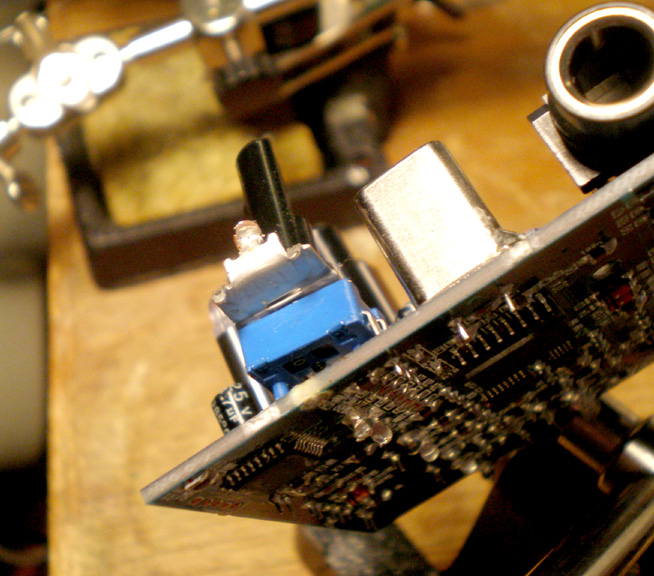
Here is a pot in the process
of being desoldered away from the board. You see one leg of the
pot casing
desoldered, and bent up and out of the way. I wedged a small screwdriver
under the pot, as I was desoldering
its anchor underneath, and carefully applied pressure to raise
the pot up, until the support leg was out of the board.
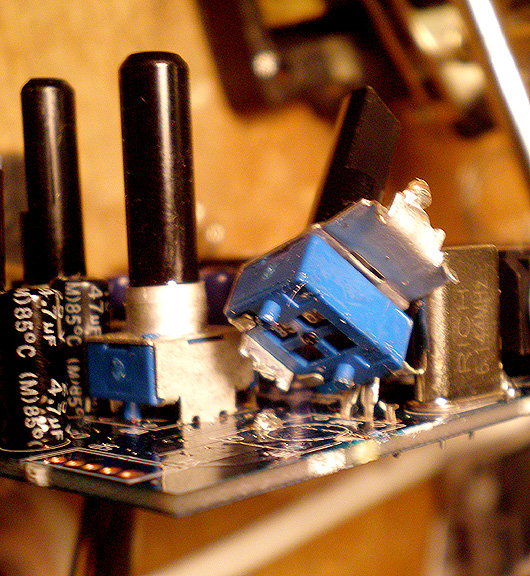
A pot, with both sides
of its anchors removed from the board, leaving the original pot
resistor terminals still attached to the PC board.
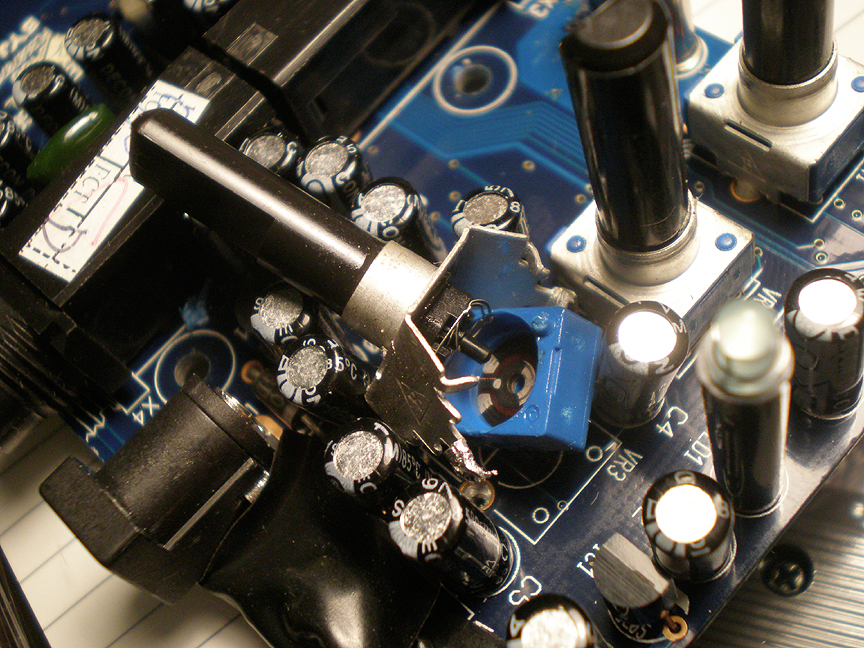
Another view of a pot, in mid-destruction. It's tight, around
all those condensers, so you really have to take your time and
be careful.
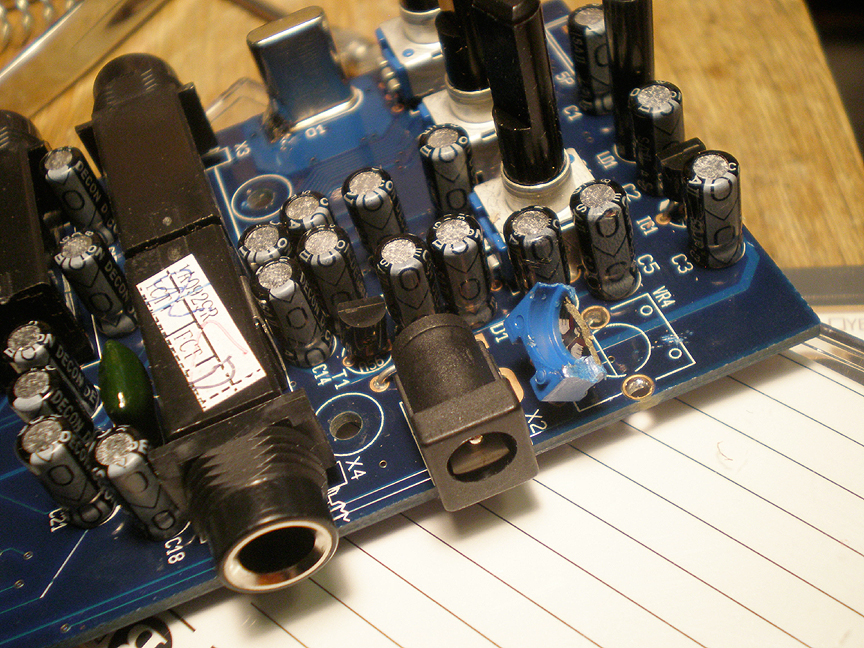
Using wire cutters, start chopping away at the potentiometer.
Being plastic, phenolic, and cheap alloy, it chops up, quite easily!
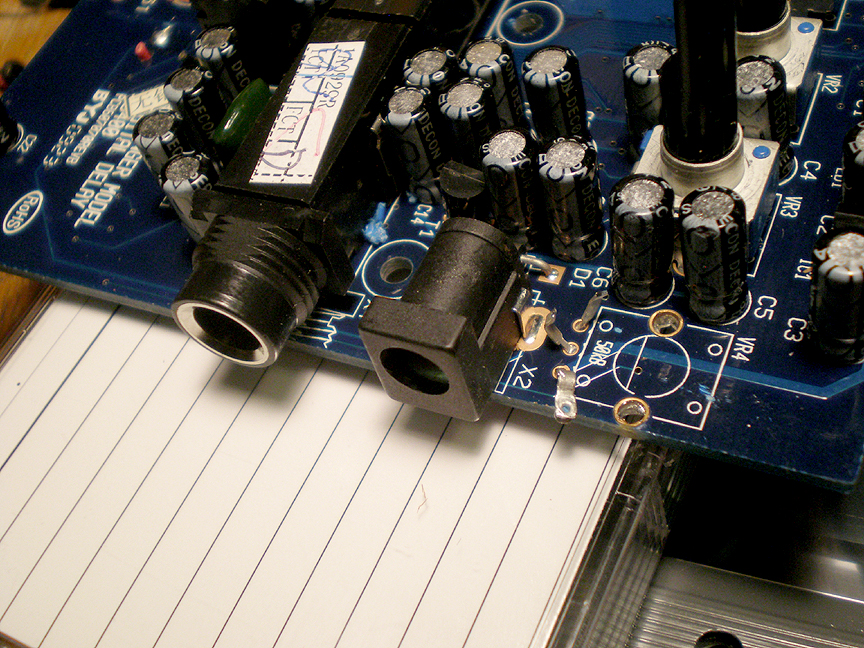
Now, the first pot has been removed (to the right of the power
connector.) You'll see the three remaining pot terminal parts.
This is all that you want to leave behind, from each pot!
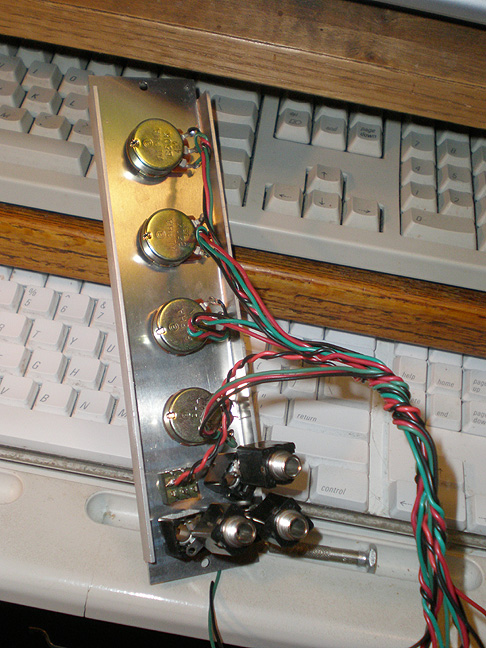
Here's an advance peek at the replacement pots. I soldered wires
to them, awaiting connections to the PC board.
You will need 50k Linear potentiometers. Try not to order
center-detent replacement pots.
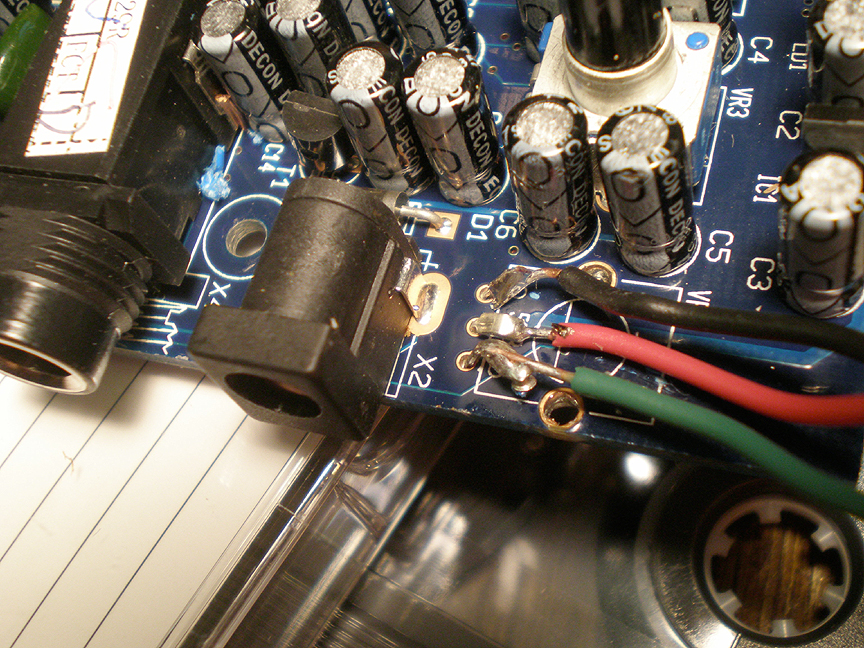
Your goal is to solder your new leads to the old pot teminals,
and leave the PC board connections underneath intact.
Use 20-gauge braided copper wire, if you can. I only had solid-core
wire, and you need very flexible wire for this project.
Wire-wrap type wire would work great, too. (I ran out!) (Regular
lead solder will work, if you still have it).
ON TO NEXT PAGE
